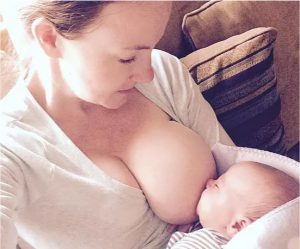 As a lactation counselor in Westchester, NY, Putnam, NY, and Dutchess, NY, I work with women and their new babies during the first weeks and months of the baby’s life. Breastfeeding is natural, but does not always come easy to every new mom and baby. Support is crucial in the early days of breastfeeding to ensure a successful start to the nursing relationship. The sooner you reach out for help with a breastfeeding concern, the sooner you will be more comfortable, less stressed, and more confident in your body’s ability to provide for your baby.
As a lactation counselor in Westchester, NY, Putnam, NY, and Dutchess, NY, I work with women and their new babies during the first weeks and months of the baby’s life. Breastfeeding is natural, but does not always come easy to every new mom and baby. Support is crucial in the early days of breastfeeding to ensure a successful start to the nursing relationship. The sooner you reach out for help with a breastfeeding concern, the sooner you will be more comfortable, less stressed, and more confident in your body’s ability to provide for your baby.
Many of my clients receive “tips” from well-meaning friends, family members, and even strangers. Some of these tips are accurate while others may be lacking. It can be difficult to distinguish fact from fiction. Many new moms to try to incorporate the advice received from everyone, usually resulting in a feeling of being overwhelmed.
Let’s sort out fact from fiction by addressing several of the most common breastfeeding myths.
In the first few days, your body doesn’t produce enough milk for your baby, so you need to “top him off” after each feeding with formula.
No! Your body begins producing colostrum (nutrient-rich “early milk”) between 16 and 22 weeks of pregnancy. In the first 24 hours of your baby’s life, his stomach is the size of a cherry (about 2-1omL capacity). As long as you are putting your baby the breast when he shows signs of hunger (rooting, light fussing, etc) your body likely has produced enough colostrum to meet his needs.
Many of my clients are advised to give their baby 0.5-1.0oz of formula after a feeding to “top off” the baby. 1oz is approximately 30mL – by two days old, this is TWICE your baby’s stomach capacity! Doing this is a very good way to sabotage your milk supply early on. What your baby is consuming at a feeding (breast milk + formula), his demand, is greater than the “supply” message your baby is sending to your body through nursing. Since your body cannot account for supplementation when producing milk, it will only produce milk to meet the demand dictated by your baby’s time at the breast. Your body is not under-producing milk – it is meeting the demand dictated by the time your baby is breastfeeding.
This is not to say that you should never supplement. If your baby has lost 10% of his birth weight (or is approaching 10% weight loss), you will want to speak with his pediatrician about ways to increase calorie intake. Supplementing at the breast (such as with an SNS) with breast milk is ideal. If breast milk (your own or from a donor) is not available for supplementing, formula would be a last resort.
A nipple shield will fix painful breastfeeding.
No! A nipple shield does not address the underlying issue as to why your baby’s latch is painful. While breastfeeding may be uncomfortable, initially, it should not be painful. Pain while breastfeeding is often indicative of a latching issue or a lip or tongue tie. These issues cannot be fixed with a nipple shield. I often share this video with clients who are experiencing painful latching. If you are experiencing pain that lasts beyond the first 30 seconds of breastfeeding, speak with a lactation professional. If you are advised to use a nipple shield, they should always provide you with a plan for weaning off of it.
I don’t get a lot of milk when I pump, so my body isn’t producing enough milk; I need to supplement.
No! Pump output is not indicative of milk supply. I will say it again, because it is THAT important to stress. PUMP OUTPUT IS NOT INDICATIVE OF MILK SUPPLY. Nothing is as effective as your baby at emptying your breast of milk. The way a baby suckles at the breast versus how the plastic flanges of a pump “suck” are grossly different.
The two most common reasons for low pump yield are:
- Incorrect Flange Size. If the flange is too large it will stimulate the breast farther back, but not near the nipple. Your body will let down, but not release all the milk. In addition to having low output you are also more prone to clogged ducts and mastitis. If the flange you are using is too small, you may develop sore nipples from them rubbing on the nipple tube. Small flanges also do not stimulate enough of the breast resulting in low output.
- “Old” pump parts. It is important to replace the “soft” parts of your pump regularly; membranes and duck bills should be replaced every 4-6 weeks depending on the frequency at which you use your pump.
I hope this post was helpful in easing some of your anxieties about breastfeeding. If you have any questions, leave them in the comments below.

